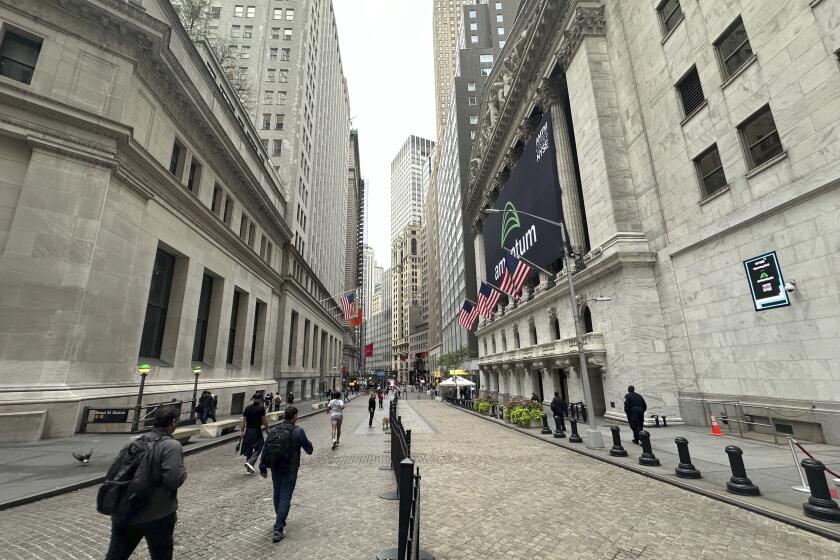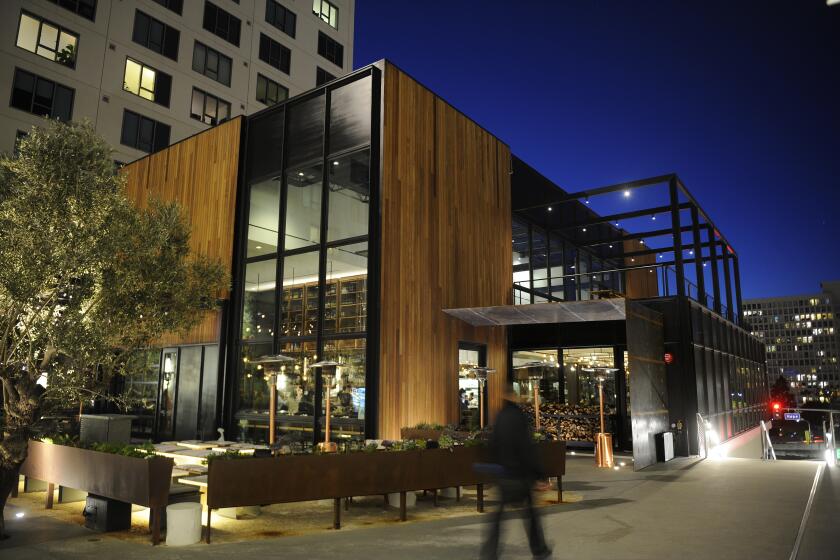Increase in Loan Limits Will Help Would-Be Buyers
High-end mortgage borrowers with impeccable credit will find conventional loan rates somewhat lower next year, while those in the lower-income brackets will find it a little easier to qualify for a government-insured home loan.
Thanks to an increase in what is called the “conforming loan limit,” rates on conventional loans of up to $227,150 will be from 0.25% to 0.5% cheaper in 1998.
Combined with a 20% down payment, that’s enough to buy a single-family house priced at $283,937. The ceiling is even higher on two-, three- and four-unit properties.
The conforming loan limit is the legal ceiling placed on home loans that can be purchased from local lenders by Fannie Mae and Freddie Mac, the two federally chartered corporations that buy mortgages for resale on Wall Street.
Because of Fannie Mae’s and Freddie Mac’s government connection and the safety that represents to investors who buy the loans that the two companies package into securities, rates are usually lower on mortgages that are made with the intention of selling them to one company or the other.
The conforming loan limit is based on the average price of houses nationally as calculated by the Federal Housing Finance Board, and changes in the ceiling are based on changes in the index from one October to the next.
In October, the housing finance board reported that the average was $166,000, an increase of 5.8% from $156,800 in October 1996. So, effective Jan. 1, Fannie Mae and Freddie Mac will raise their limit a corresponding 5.8%, or $12,550.
Also on Jan. 1, the ceiling on mortgages insured by the Federal Housing Administration, which is tied by law to the statutory limits placed on Freddie Mac, will rise up to $170,362 in high-cost areas and $86,317 everywhere else.
Whereas loans purchased by Fannie Mae and Freddie Mac are usually for borrowers considered the least likely to default, FHA mortgages are considered the financing of last resort for borrowers who can’t qualify for any other loans.
The increase in the FHA limits is important to would-be buyers who have been shut out of the housing market because they earn too little, have too much debt, haven’t been on their current jobs long enough or don’t otherwise meet Fannie Mae and Freddie Mac’s more stringent rules.
Unlike the higher-end Fannie Mae and Freddie Mac loans, which probably will be made whether they are any less expensive or not, said Doug Duncan of the Mortgage Bankers Assn., the higher FHA ceiling “will bring new borrowers into the market.
The $12,550 increase in the conforming limit isn’t the largest ever recorded. But it is the first five-figure jump since 1992, when the ceiling rose $10,050.
Between 1986 and 1989, the ceiling increased $72,300: $17,950 in 1986, $19,850 in ‘87, $15,600 in ’88 and $18,900 in ’89.
The jump will result in a “fairly significant increase in market share” by the two government-sponsored enterprises, according to Brian Smith of America’s Community Bankers, the trade association for savings and loan associations and savings banks, institutions that tend to hold their loans in portfolio rather than sell them.
In previous years, the ACB has protested Fannie Mae and Freddie Mac’s deeper intrusion into the private sector and questioned why higher-income borrowers should benefit from the enterprises’ government connection.
But this time, Smith only alluded to those issues, preferring instead to note that the higher limit means that the housing market has picked up steam. Other new conforming loan limits for 1998: $290,650 for mortgages on two-unit properties, $351,650 for three-unit dwellings and $436,600 for four-unit buildings.
The other FHA loan limits in high-cost areas for ‘98: $217,987 for two-unit houses, $263,475 for three-unit properties and $327,450 for four-unit structures.
(BEGIN TEXT OF INFOBOX / INFOGRAPHIC)
Average Mortgage Rates and Indexes
Weekly Survey of 90 Southland Lenders as of Dec. 11, 1997*--*
Latest One Week Six Months week previous previous Rates for loans under $214,600 30-year fixed 6.91%/1.97pt 6.93%/1.94pt 7.53%/1.96pt 30-year 5.78%/1.61pt 5.65%/1.66pt 5.85%/1.25pt ARM start rate 15-year fixed 6.65%/1.88pt 6.67%/1.87pt 7.22%/1.78pt Rates for loans over $214,600 30-year fixed 7.19%/2.04pt 7.25%/2.00pt 7.68%/2.03pt 30-year 5.80%/1.63pt 5.72%/1.63pt 5.85%/1.54pt ARM start rate 15-year fixed 6.98%/1.91pt 7.02%/1.89pt 7.48%/1.79pt FHA or VA mortgage average points 7.00%/1.87pt 7.00%/2.04pt 8.00%/0.86pt CALVET 30-year ARM start rate 8.00% 8.00% 8.00% 6-month LIBOR 5.906% 5.969% 5.875% 1-year 5.530% 5.540% 5.720% treasury bill 6-month 5.230% 5.220% 5.170% treasury bill 6-month certificate of deposit 5.850% 5.830% 5.800% Prime rate 8.500% 8.500% 8.500% 11th District cost of funds 4.957 4.941 4.822 For the month of Oct. ’97 Sept. ’97 April ’97
*--*
Compiled by Mortgage News Co., Morro Bay, Calif.
More to Read
Inside the business of entertainment
The Wide Shot brings you news, analysis and insights on everything from streaming wars to production — and what it all means for the future.
You may occasionally receive promotional content from the Los Angeles Times.










